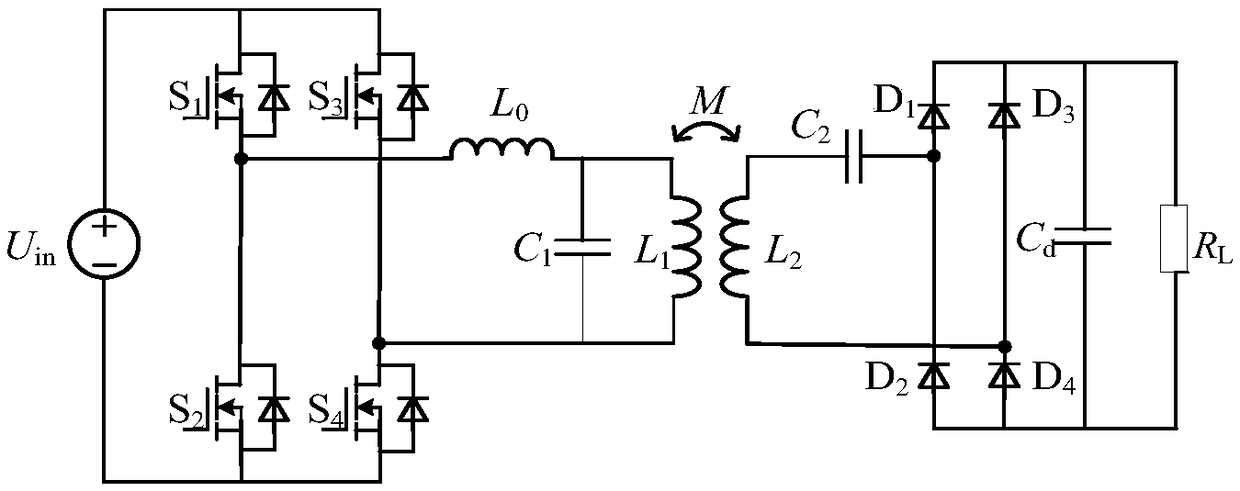Charging method based on constant current-constant voltage output characteristics of wireless electric energy transmission system
A technology of wireless power transmission and constant voltage output, which is applied to battery circuit devices, current collectors, electric vehicles, etc., and can solve problems such as shortened cycle life and rapid drop in battery capacity
- Summary
- Abstract
- Description
- Claims
- Application Information
AI Technical Summary
Problems solved by technology
Method used
Image
Examples
Embodiment
[0148] The research method of the present invention is carried out simulation analysis, in the parameter calculation process, known simulation parameters have: DC voltage source output voltage is 100V, high-frequency inverter output square wave AC voltage effective value U 1v =90V, resonant frequency f 0 = 85kHz;
[0149] Set the self-inductance L of the primary coil of the coupler 1 =125μH, the self-inductance L of the secondary side coil 2 =125μH, mutual inductance M=37.5μH (that is, coupling coefficient k=0.3), L 0 = 125 μH. Parallel capacitance C on the primary side 1 =56.09nF, the secondary side series capacitor C 2 =28.05nF, from the formula (18), when the coupling coefficient k=0.3, ω nB =1.144, that is, the high operating frequency point f 0B =1.144, f 0 = 97kHz; do not consider the application of complex working conditions in the charging process of the battery, so only the influence of its internal resistance is considered. In the simulation, the resistance v...
PUM
 Login to View More
Login to View More Abstract
Description
Claims
Application Information
 Login to View More
Login to View More - R&D
- Intellectual Property
- Life Sciences
- Materials
- Tech Scout
- Unparalleled Data Quality
- Higher Quality Content
- 60% Fewer Hallucinations
Browse by: Latest US Patents, China's latest patents, Technical Efficacy Thesaurus, Application Domain, Technology Topic, Popular Technical Reports.
© 2025 PatSnap. All rights reserved.Legal|Privacy policy|Modern Slavery Act Transparency Statement|Sitemap|About US| Contact US: help@patsnap.com



